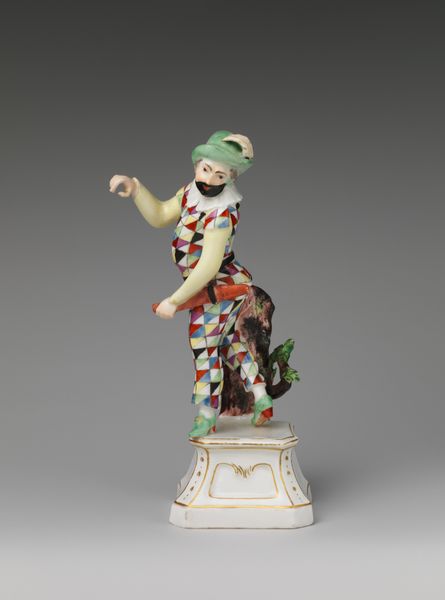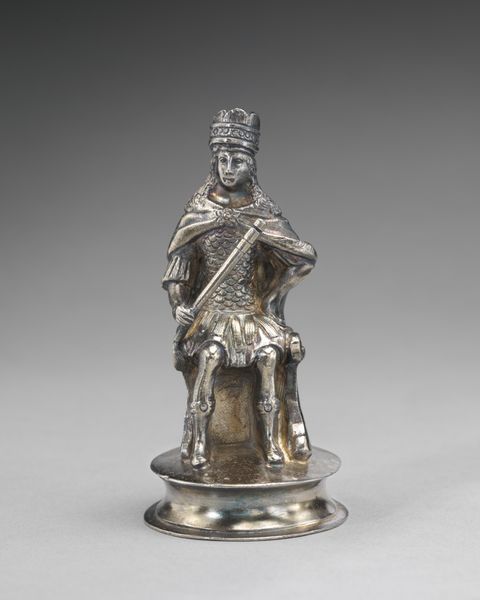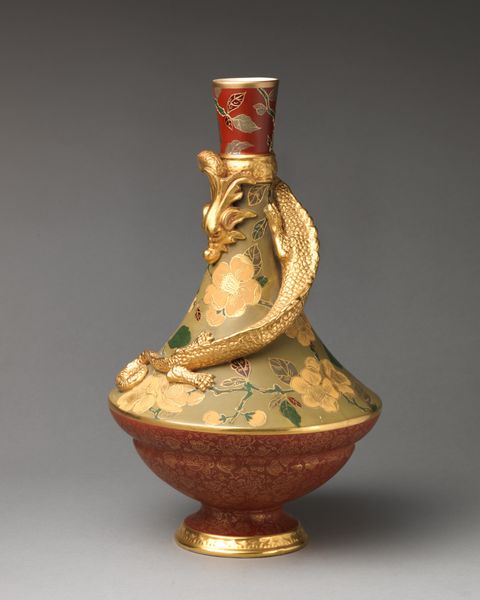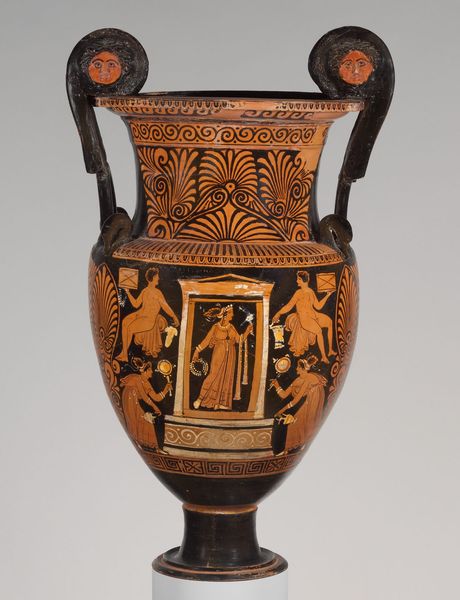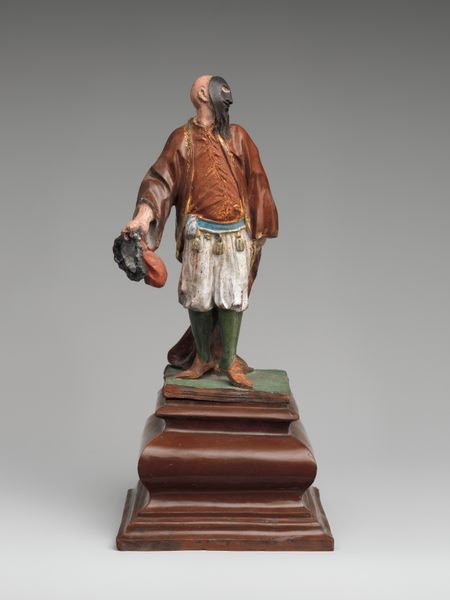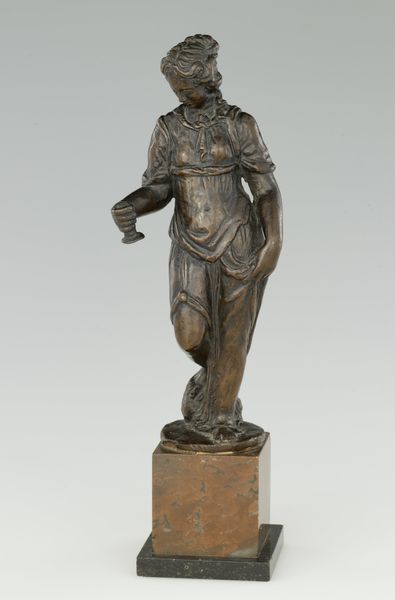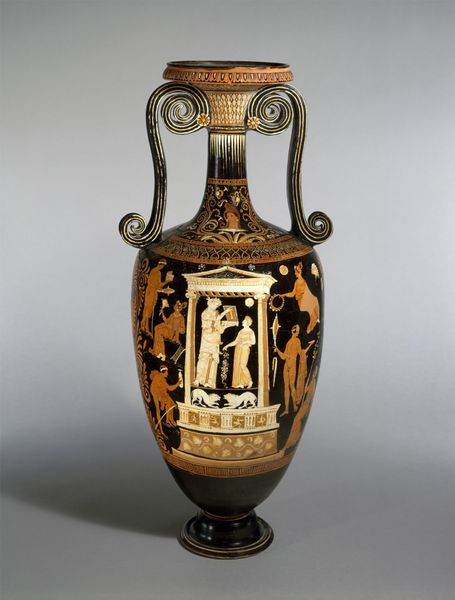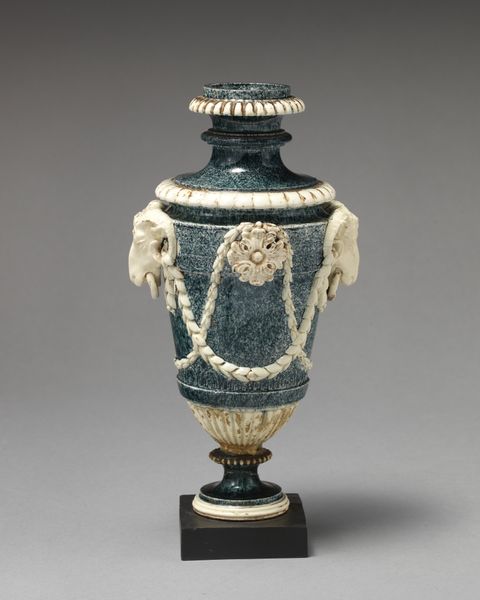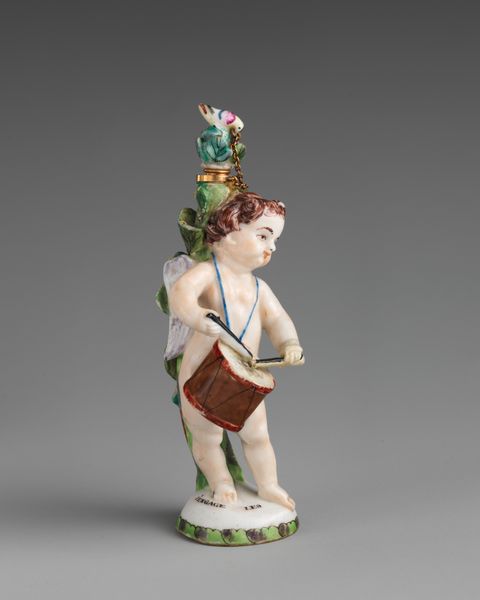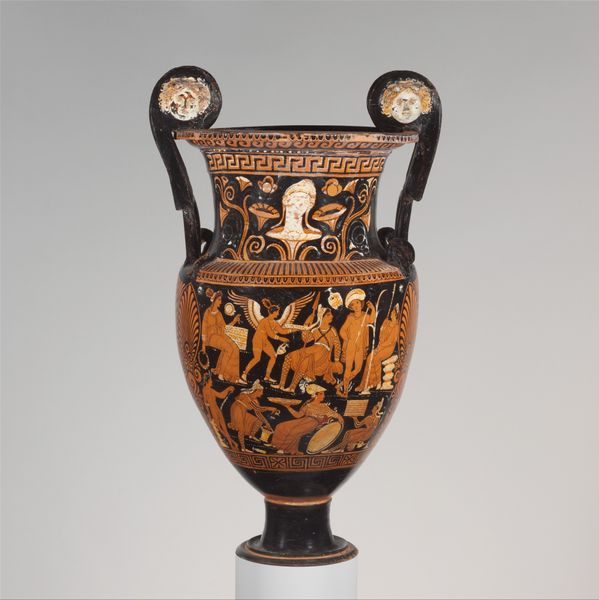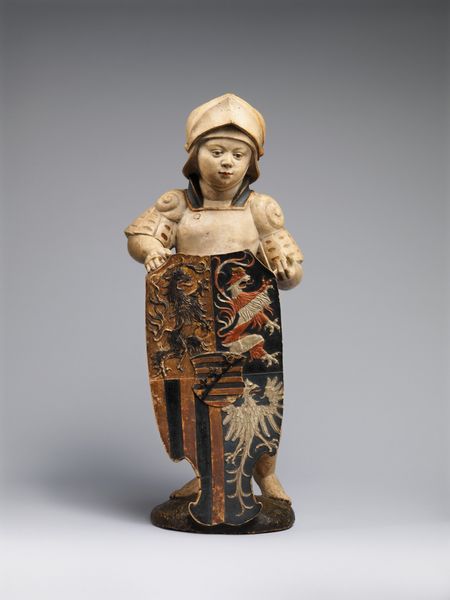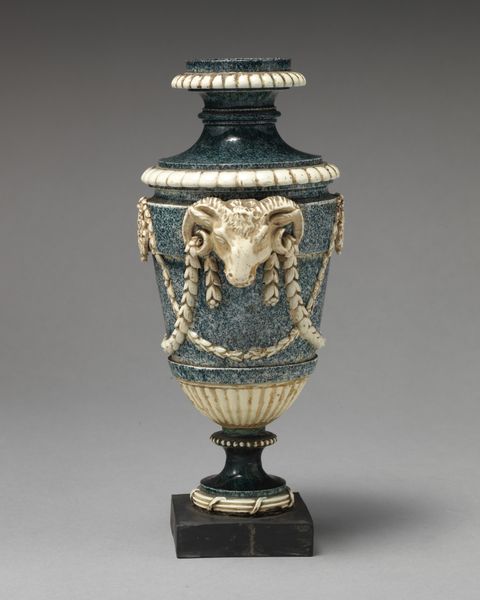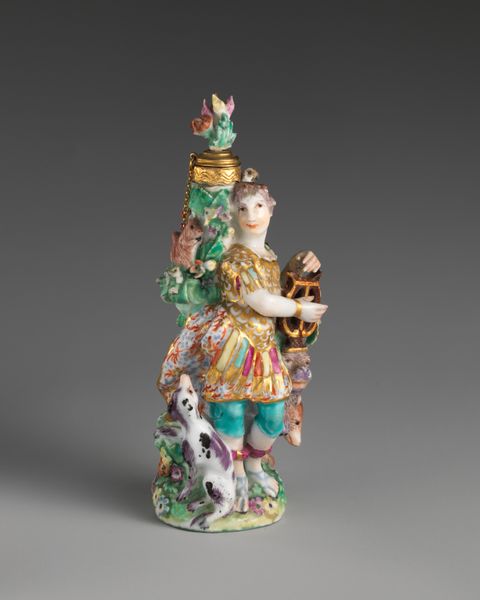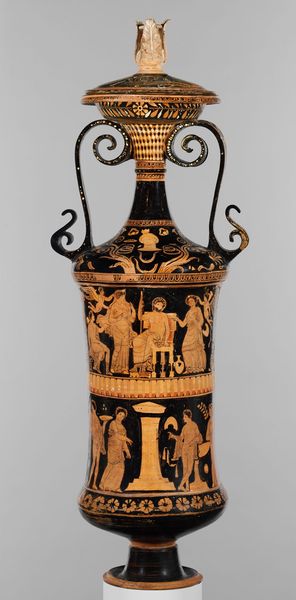
carving, sculpture, marble
#
portrait
#
neoclacissism
#
carving
#
classical-realism
#
figuration
#
sculpture
#
history-painting
#
decorative-art
#
marble
Dimensions: Height: 13 1/4 in. (33.7 cm)
Copyright: Public Domain
Curator: What a fascinating piece! The details in this figure are incredible. Editor: It has such a stately, almost arrogant, air about it. What is it made of? Curator: We're looking at a 19th-century marble sculpture of a “Roman Emperor,” created by Reinhold Vasters. It’s part of the decorative arts collection here at the Met. What strikes me is how Vasters evokes the grand traditions of Neoclassicism, yet it is so richly embellished, such that it speaks more of theatrical display. Editor: The embellishments certainly draw the eye, even distract from the marble figure. The gold trim especially, edging every garment, seems to denote the ruler’s power… and his wealth. Does the eagle perched atop the helmet point toward anything specific? Curator: It is undoubtedly a visual shortcut, an immediate connection to Roman imperial power and military might. Eagles in ancient Rome were emblems of the state, representing Jupiter and, by extension, the emperor. Vasters clearly wanted to embed a quick read into the symbol of Roman imperium. Editor: The use of varied colored marble is striking. Does that chromatic range have historical relevance? Curator: It might signal a conscious connection to the opulence associated with the late Roman Empire. During that period, the use of vibrant and imported marbles was definitely intended to project power, wealth, and refined taste. What Vasters offers here might be a pastiche. Editor: Yes, the more I observe, the more theatrical this piece becomes. Given its period, the sculpture becomes something of a statement on how the 19th century views imperial grandeur, Roman history filtered through an almost dreamlike lens. What are your thoughts on how the figure's stance contributes to this narrative? Curator: Absolutely, that sense of slightly aloof self-regard amplifies that reading of power as performative, which fits neatly into a 19th-century fascination with both the spectacle and supposed moral lessons of classical antiquity. Seeing the Roman Empire as at once awe-inspiring and, also, decadent. Editor: So much to contemplate in one little figure. It has become an image about images. Curator: Precisely, a potent distillation of history, symbolism, and commentary, all materialized in colorful stone.
Comments
No comments
Be the first to comment and join the conversation on the ultimate creative platform.
